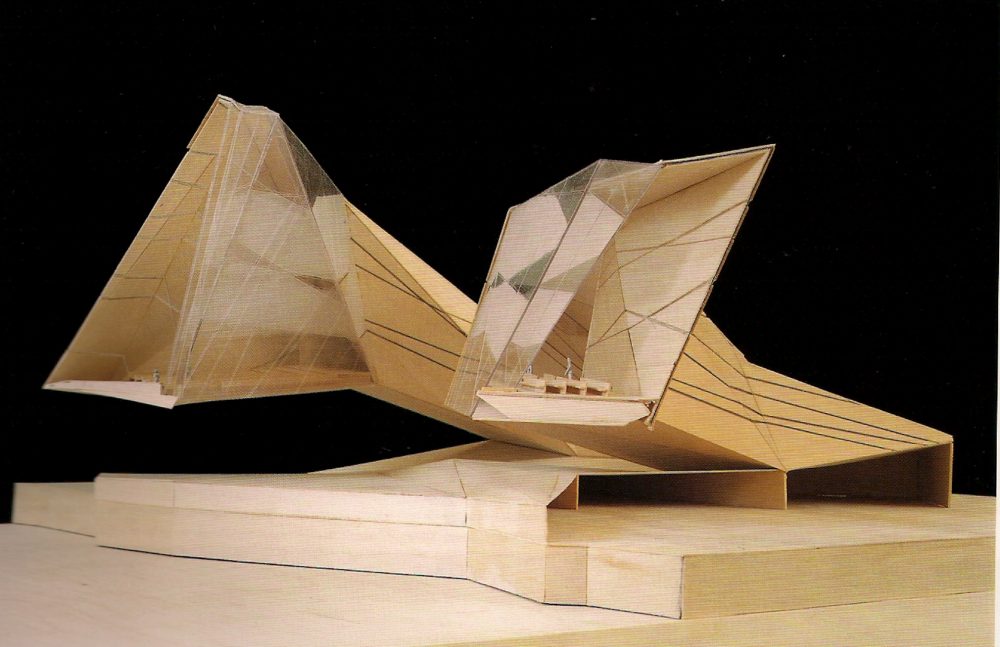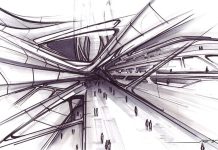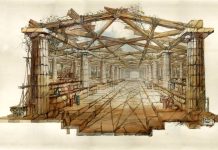The term discreteness characterizes the space-time limitation of the elements and states of the object. Continuity is understood as the relationship of elements and states
Each built architectural object serves society, each building has its own destiny and is somehow used by society, evaluated by it, has the opposite effect on society. The life of an architectural object in society is the history of society, and the social and economic structure of society, in turn, influences the formation of architectural objects and design work through the institution of social order.
It should also be noted the opposite extreme – the prevalence of social structure and its mechanical expression in spatial form, which drew the attention of American researcher Kevin Lynch. According to his concept, the architectural form consists of a combination of intentions or negligence, accidents. Prisons, concentration camps and military camps were created with the specific purpose of subjugating people to certain social orders using means of mental suppression. Isolation, loss of the right to stay with oneself, loss of orientation in space, time are the most effective means of such an impact on the human psyche through spatial form. The study of various kinds of impacts of architectural form on a person is extremely important.
Just as the study of pathological abnormalities allows us to establish the nature of health – the optimal functioning of the body, so I.Sh. Shevelev noted on this occasion: “We are looking for a geometric structure that, with a wide variety of probabilistic configurations, is composed of a set of initial components selected by the history of previous existence and creation. It is useful for an architect, artist, engineer to know the rules of the “correct” division of space. These rules are expressed in the system of orthogonal projections, proportionality and metric.”
It is due to the regular repetition of the same units and their combinations that an architectural object appears as a kind of complete whole, i.e. as a whole endowed with meaning.
In linguistic science, such combinatorial rules are called forms. The shape, then, is what allows the adjacency relation between units not to look like the result of pure chance.
Architectural objects are what a person deduces from the power of chance, which is endowed with meaning and has its own purpose, even if not explicitly expressed. The loss of this meaning takes the object out of the sphere of architecture into the sphere of the natural environment. On this occasion, R. Barth noted: “… human thought does not obey the analogical logic of copies and samples, but the logic of ordered formations, and on the other hand, these same works, in the eyes of those who do not distinguish any form in them, look like chaotic and the most worthless.” As an example illustrating the idea expressed, it is enough to recall the palace in the city of Split (Middle Dalmatia) of the Roman ruler of the III century Diocletian. After the destruction of the Roman Empire, the fall of the social and cultural foundations of the organization of society, the tribes who came settled in Dvorna. The structure that was necessary for the Roman government turned out to be unsuitable and incomprehensible for them. Diocletian’s palace was considered as a quarry fortified with external walls. A small-scale medieval city grew up inside the palace, the inhabitants of which did not even notice the majestic Roman forms, since they had no practical meaning for the new, alien culture.
The fate of the Colosseum in the city of Arles in France is also interesting. There are engravings and drawings showing that during the early Middle Ages, a medieval city grew up inside the Colosseum, which used the walls of the Roman Colosseum as external city fortifications. Subsequently, with the expansion of the city’s territory, the need for such a fortress disappeared, and the Colosseum was partially restored.
Many medieval European cities grew due to the building stone of the previous Roman buildings. Similar processes took place almost everywhere where the continuity of the Roman tradition was lost. The Roman architectural system was maintained for some time by the Ptolemaic dynasty in Alexandria and other cities of Egypt and Tunisia, in the major colonial centers of Asia Minor (the cities of Gerassa, Apomes, Baalbek, Boer) and Constantinople. The emergence of Islam in the middle of the XII century and its rapid spread through the colonial territories of the former great empire finally supplanted the Roman cultural influence. Thus, with the loss of the socio-political system of the Great Roman Empire, the content of the forms of its architectural system disappeared.
The methodology of structuralism has given great positive results in the analysis of cultural phenomena. Since architecture is a cultural phenomenon, we can rightfully apply structural methods to the analysis of objects belonging to this phenomenon.
However, the structuralist methodology is characterized by the absolutization of formalized structures. The emphasis on the objectivist analysis of cultural phenomena excludes from the culturological analysis of a person as a subject of culture with the fullness of the problematic of the individual’s artistic worldview and the peculiarities of the mechanisms of his individual creativity.
The peculiarity of individual creativity and the difficulties of its research was also noted by the German philosopher Friedrich Nietzsche on the example of language. “The most understandable thing in a language is not the word itself, but the tone, accent, modulation, tone with which a number of words are pronounced. – in short, music hiding behind words, passion hiding behind music, personality hiding behind passion, i.e. everything that cannot be written.” This statement emphasizes that there are aspects of cultural phenomena that cannot be formalized. They cannot be studied by conventional natural science methods. They will probably remain for a long time the “magic” that is beyond the power of modern science — for example, creativity, intuition and intuition.
In structuralist research, it is assumed that the human subject is either taken out of the scope of consideration altogether, or is interpreted as something independent, derived from the functioning of objective structures. This thesis in structuralism is called the thesis of the “death of man”. On this occasion, M. Foucault summed up this problem with one statement: “A person dies, structures remain.”




















